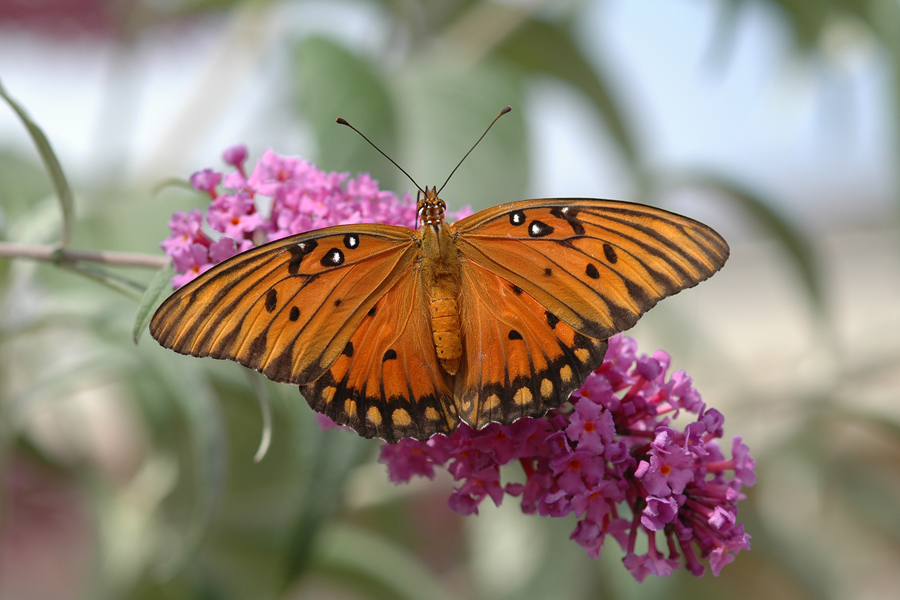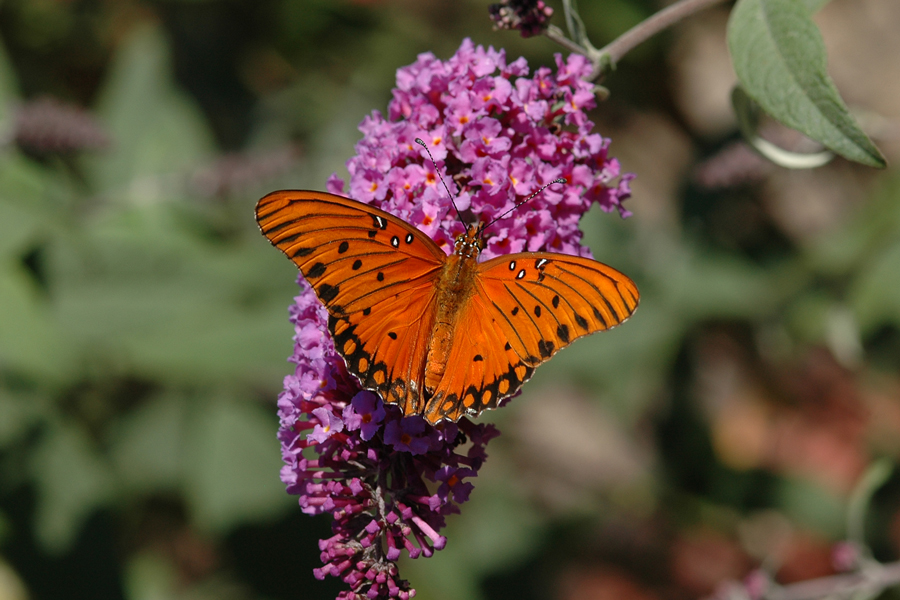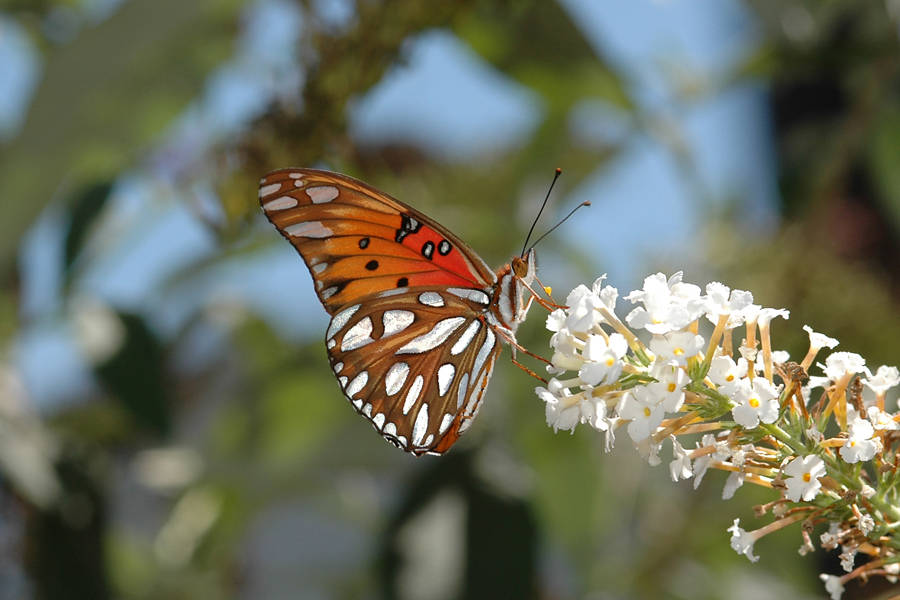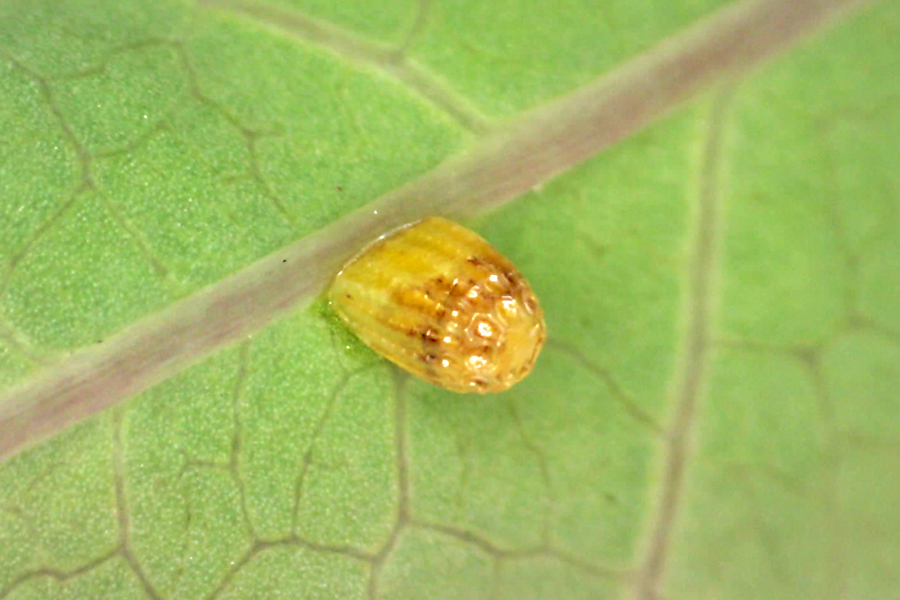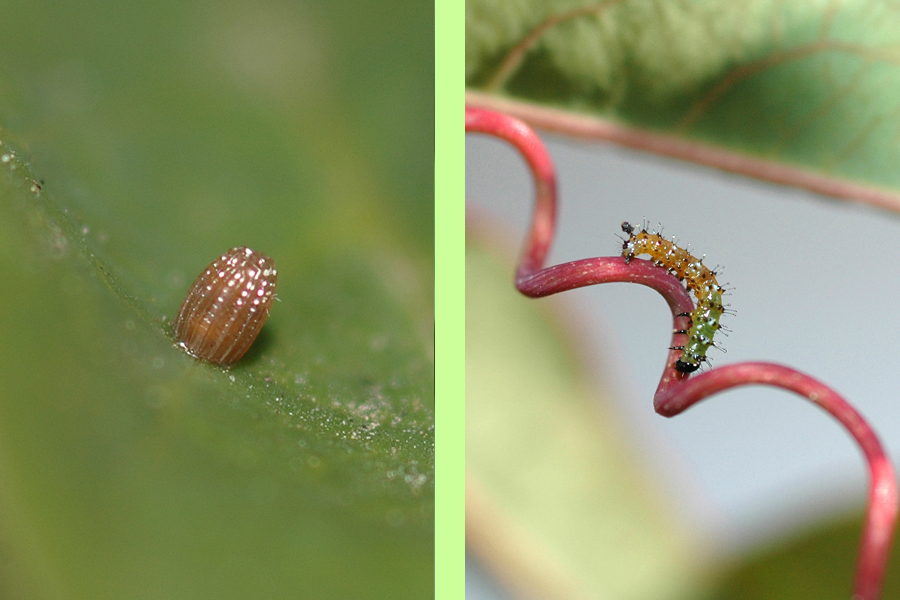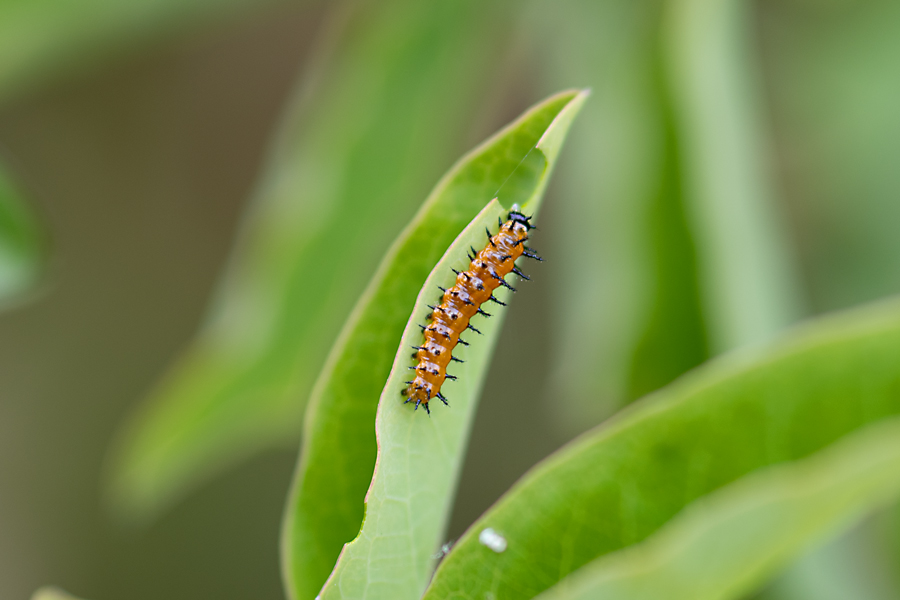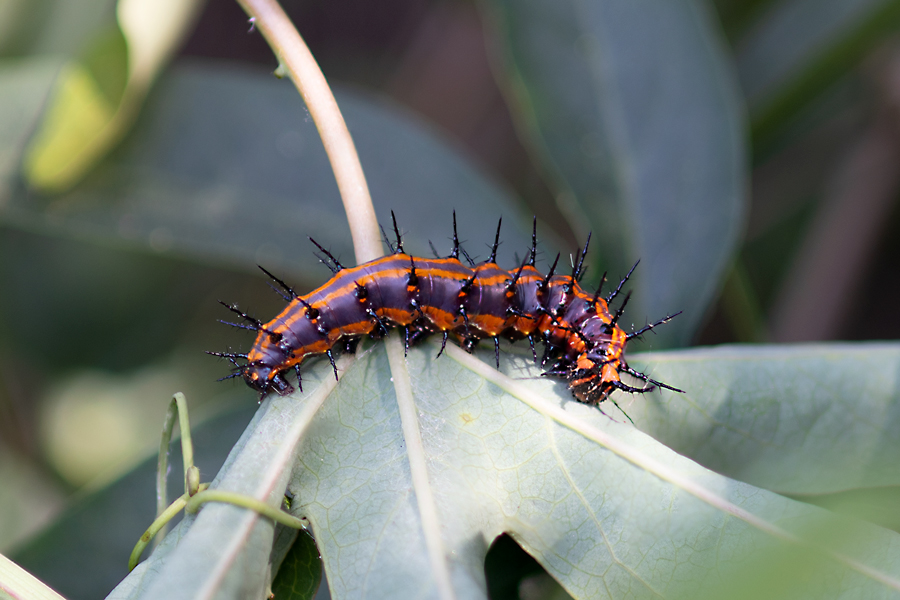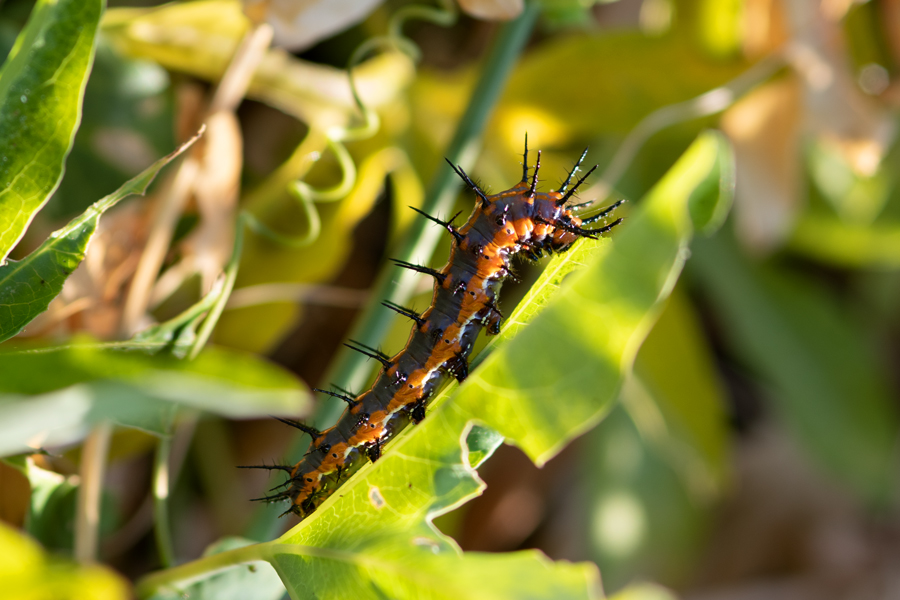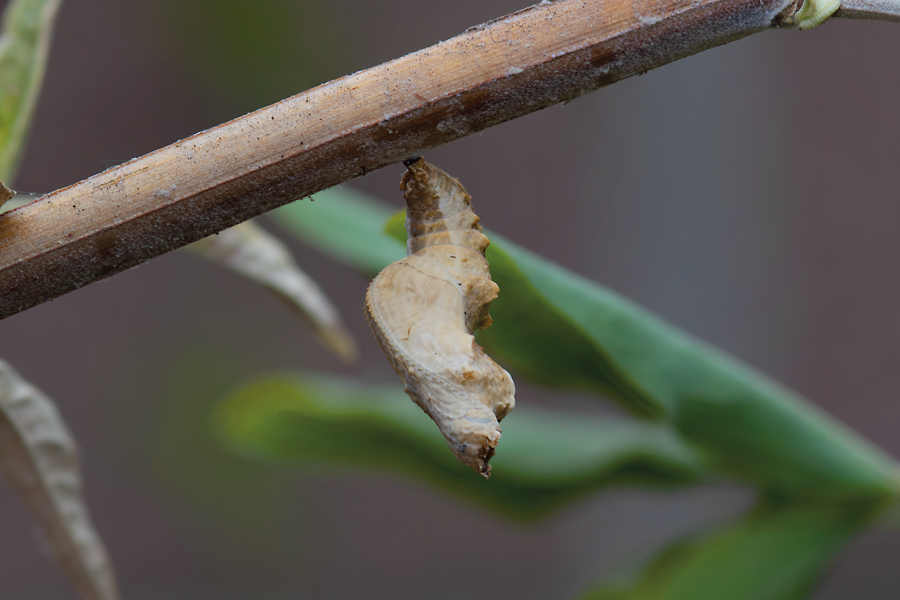Dione incarnata incarnata
Gulf Fritillary
The "tropical" butterfly known as the gulf fritillary may easily be drawn to the garden by planting passion vines (Passiflora spp.). While the plants aren't natives, the butterfly may actually be, strange as it may seem. In his book The Butterflies of the West Coast (1905), W.G. Wright claimed that gulf fritillaries came to California when the Southern Pacific Railroad established service from New Orleans ca. 1885. This was disputed, however, by Karl Coolidge in a note in the Entomological News, vol. 35 (1924), pp.22-3. Coolidge wrote that the butterfly was "indigenous to the Mohave and Colorado Desert regions, and as early as 1876 was reported to be very abundant about San Diego." As for the pre-passiflora hosts, Coolidge offered Trifolium as a possible native food plant without showing the butterfly actually used it successfully. Scott (1986) lists only species of passiflora as hosts. At a minimum, it's been around southern California for a while.
Native or not, this is a welcome butterfly to our fauna and an easy one for the suburban gardener to attract and raise. It is also beautiful. I very much remember being fixated by the three white dots encircled in black against the deep orange of each dorsal forewing as a turning point in my interest in butterflies many years ago. Then there is the gorgeous underside, so exotic to the unsuspecting suburbanite who bothers to examine it.
The species was named by Linnaeus in the tenth edition of Systema naturae (1758), "probably" based on a specimen brought from Suriname. Incarnata, long a subspecies of vanillae and in the genus Agraulis, was raised to species level recently under Dione. The type locality remains "near Durango City, Mexico."
